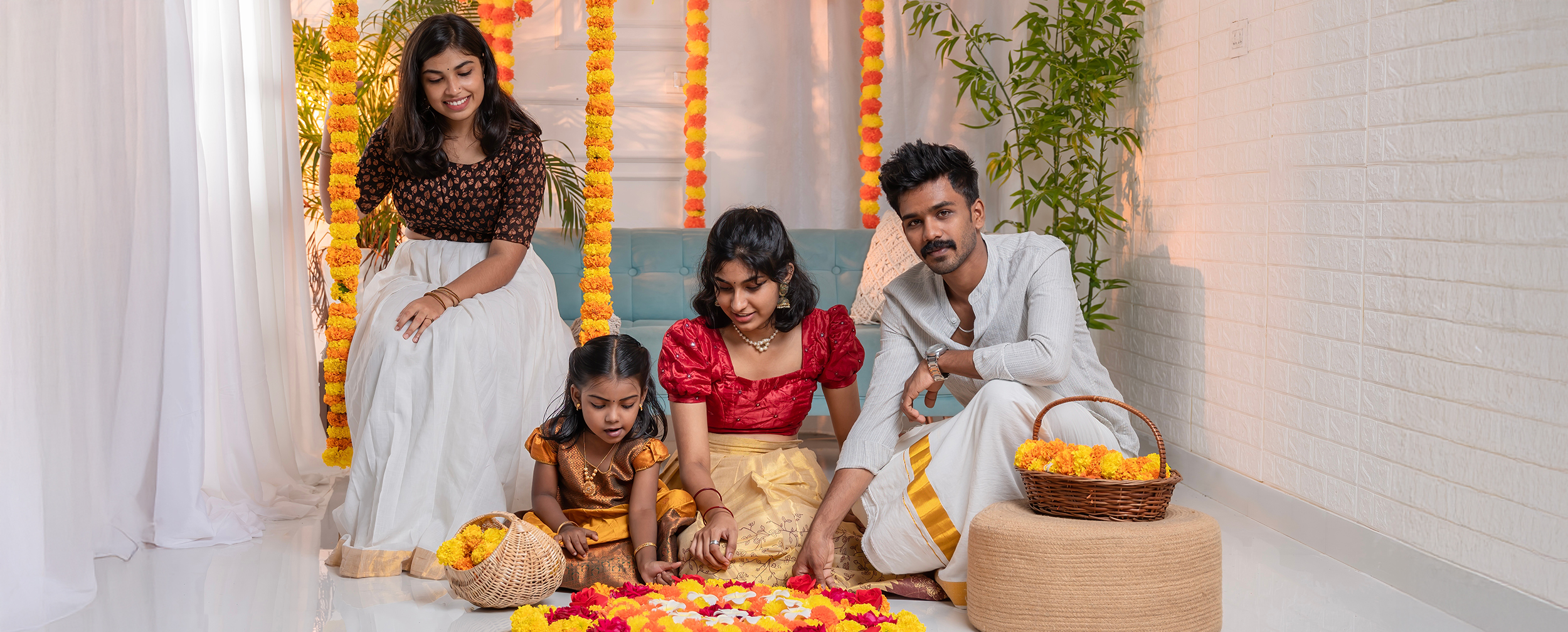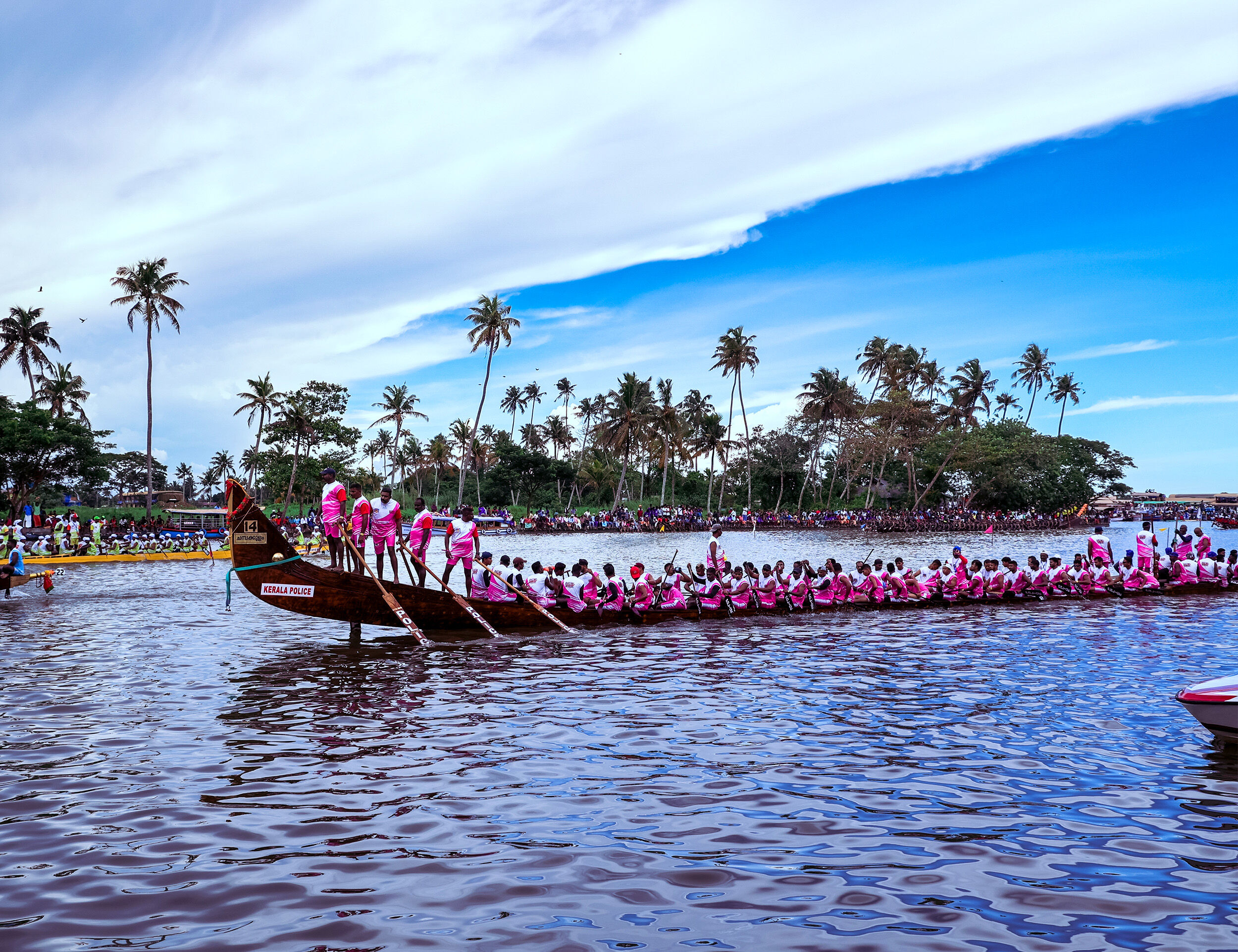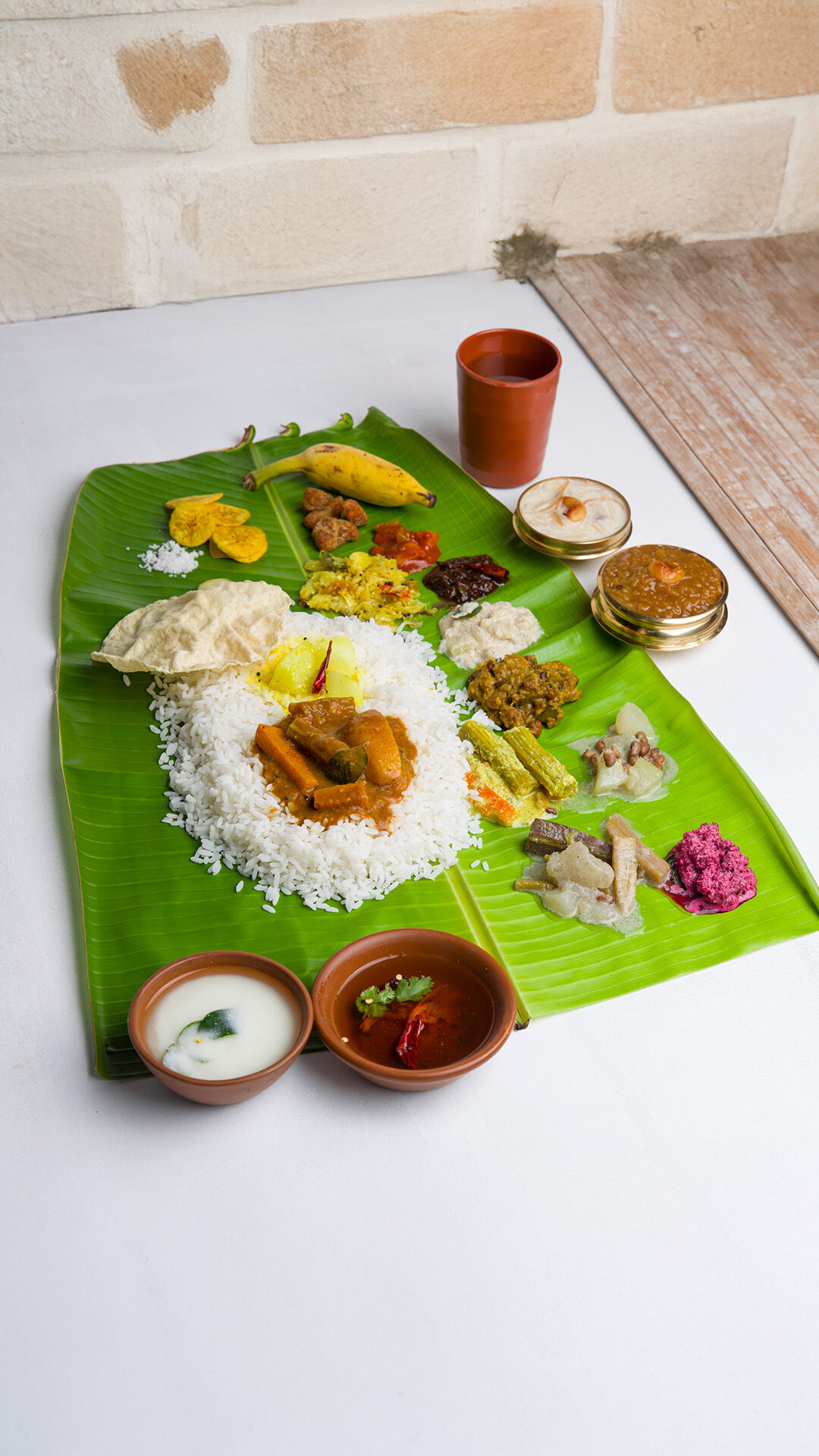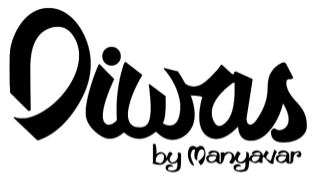STORIES BY DIWAS

Lifestyle
10 Days of Joy: Your Complete Guide to Onam Celebration in Kerala
Date 27 July 2025 Reading time: 7-10 mins
As the monsoon rains fade and the skies clear, Kerala transforms into a vibrant tapestry of colours, sounds, and traditions with the arrival of Onam. This beloved festival is a cultural cornerstone that unites people across the state in a shared expression of joy and heritage. The Onam celebration in Kerala weaves together mythology, harvest traditions, and community spirit, creating an experience that resonates deeply with locals and captivates visitors alike.
When is Onam celebrated in Kerala? It falls during the Malayalam month of Chingam, typically between August and September, with festivities spanning ten days and culminating in the grand finale of Thiruvonam.
From intricate floral designs to lavish feasts, thrilling boat races to soulful performances, the Onam celebration in Kerala is a sensory delight. This guide takes you through its history, rituals, and traditions, offering a window into how Keralites bring this festival to life.
Why is Onam celebrated in Kerala?
The history and significance of Onam is steeped in mythology and carries profound cultural weight. Central to the festival is King Mahabali, an asura monarch whose unmatched generosity brought Kerala an era of harmony and abundance—no poverty, no injustice. His growing fame alarmed the gods, leading Vishnu to appear as Vamana, a humble dwarf Brahmin, and politely ask for three paces of land.
When Mahabali agreed, Vamana grew to cosmic proportions, covering the earth and the heavens in two strides. For the third, the king offered his own head. Touched by his selflessness, Vishnu granted Mahabali’s boon to return annually to see his people.
This legend is woven into how Onam is celebrated in Kerala - from elaborate pookalams (flower carpets) and the legendary Onam Sadhya feast served on banana leaves, to the adrenaline of vallam kali boat races and the grace of Kathakali dances—all designed to welcome back the beloved ruler and reignite his spirit of equality and joy.
It’s a heartfelt welcome to Mahabali, a celebration of his ideals, and a nod to the harvest that sustains the land. Over time, Onam has evolved into a secular festival, embraced by all communities, with the Kerala government promoting it since 1961 as a showcase of the state’s rich heritage.
The Ten Days of Onam Celebration in Kerala
To understand how Onam is celebrated in Kerala, one must appreciate its ten-day unfolding of rituals that build anticipation for Thiruvonam. Here’s a journey through this festive arc:
Day 1: Atham
The festivities kick off with Atham, when homes come alive with the first strokes of Pookalam—floral carpets crafted from fresh blooms like marigolds and hibiscus. In Tripunithura, the Athachamayam parade adds flair with floats, folk artists, and music, signalling the start of Onam.
Day 2: Chithira
On Chithira, the Pookalam grows with additional layers of flowers. Families begin tidying their homes, setting the stage for the days ahead with a sense of renewal.
Day 3: Chodhi
Chodhi is a day of excitement as families head to bustling markets to buy new clothes, jewellery, and gifts. It’s an auspicious time to refresh wardrobes for the festivities.
Day 4: Vishakam
Preparations for the Onam Sadhya, the grand feast, begin on Vishakam. Women take charge, planning menus and gathering ingredients, infusing the air with anticipation.
Day 5: Anizham
Anizham brings the thrill of Vallamkali, the snake boat races. Rivers across Kerala, especially Alappuzha’s Punnamada Lake, roar with the energy of rowers and cheering crowds.
Day 6: Thriketa
Thriketa sees families visiting temples to offer prayers, while cultural performances start to fill the evenings, drawing communities closer.
Day 7: Moolam
By Moolam, homes glow with decorations—lights, flowers, and festive cheer. Community feasts emerge, offering a taste of the grand Sadhya to come.
Day 8: Pooradam
On Pooradam, small clay figurines called Onathappan, symbolising Mahabali, are placed within the Pookalam, which now dazzles with intricate designs.
Day 9: Uthradom
Known as “Onam Eve,” Uthradom is a flurry of last-minute preparations. Fresh produce is bought, and homes buzz with excitement as Mahabali’s arrival nears.
Day 10: Thiruvonam
Thiruvonam is the pinnacle of Onam. Families gather for the Sadhya, exchange gifts, and revel in performances, embodying the unity and joy Mahabali inspires.
The Traditional Onam Sadhya: A Feast to Remember
No Onam celebration in Kerala is complete without the Onam Sadhya—a lavish vegetarian feast served on banana leaves that’s as much a ritual as it is a meal. When exploring how Onam is celebrated in Kerala, the Sadhya—featuring over 20 dishes from creamy Avial to sweet Payasam—is a culinary ode to Kerala’s flavours and abundance.
Served with rice at the centre, surrounded by curries, pickles, and crispy pappadam, the feast is a communal affair. Families sit together on the floor, eating with their hands, a tradition that fosters equality and togetherness. The Sadhya’s preparation is a labour of love, often involving entire households, reflecting the festival’s spirit of sharing and prosperity.
Onam Games and Activities
Onam bursts with playful energy through its games and activities. Vallamkali, the snake boat race, is a highlight—long, serpent-like boats glide through backwaters, rowed by teams in perfect harmony. The Nehru Trophy Boat Race in Alappuzha is a must-see spectacle.
Then there’s Puli Kali, where performers painted as tigers leap and dance to drumbeats, delighting onlookers with their vibrancy. Games like Uriyadi (pot-breaking) and Tug of War add a nostalgic charm, making Onam a time of laughter and camaraderie.
Onam Dance and Music: A Cultural Extravaganza
The Onam celebration in Kerala comes alive with music and dance, showcasing the state’s artistic soul. Kathakali, with its elaborate costumes and expressive storytelling, narrates epic tales, while Thiruvathirakali sees women in graceful circles, swaying to rhythmic songs.
Folk performances like Puli Kali and Kummattikali bring humour and colour, accompanied by Onappaattu—songs that echo Mahabali’s legacy. These art forms don’t just entertain; they preserve Kerala’s cultural heartbeat.
Onam Attire: The Kerala Mundu and Kasavu Saree
Dressing up is a cherished part of Onam. Men don the Mundu, a cream dhoti with a golden border, exuding understated elegance. Women shimmer in Kasavu Sarees, their golden threads catching the light, often paired with jasmine flowers in their hair.
The Kasavu Saree is a symbol of Kerala’s identity. Modern twists like Kasavu-inspired dresses offer comfort without sacrificing style, ensuring everyone shines during the Onam celebration in Kerala.
The Spirit of Onam Celebration in Kerala
Onam is a celebration of life itself—a fusion of history, harvest, and harmony. It transcends boundaries, uniting Keralites in a shared tribute to Mahabali’s legacy of generosity and equality. How is Onam celebrated in Kerala? With Pookalams that bloom, Sadhyas that nourish, races that thrill, and dances that enchant—all woven together by a spirit of togetherness.
Onam is a reminder that festivals are about more than rituals—they’re about connections, culture, and the joy of being alive. And if you're looking to dress the part, Diwas offers a stunning collection of festive wear that captures the essence of Indian celebrations while keeping you stylish and comfortable.



